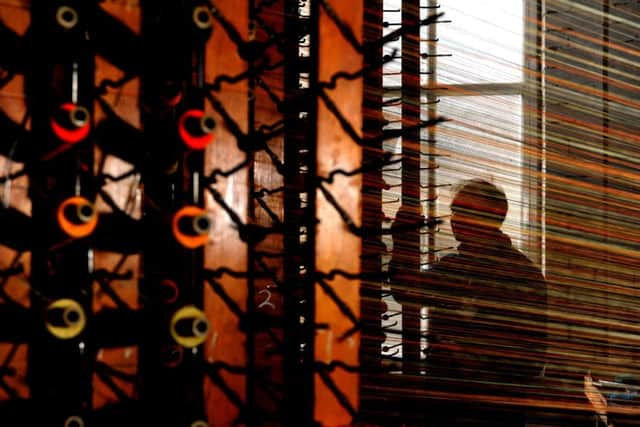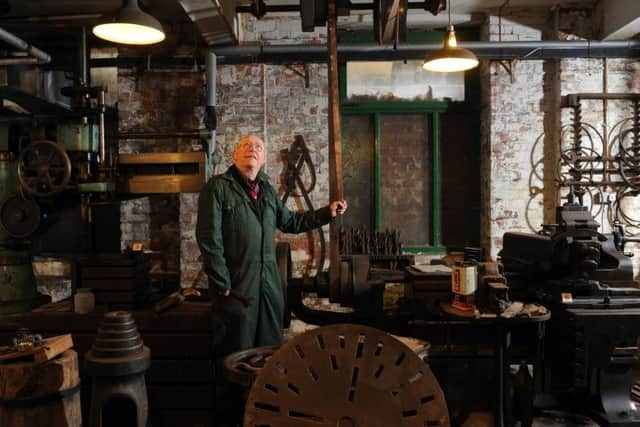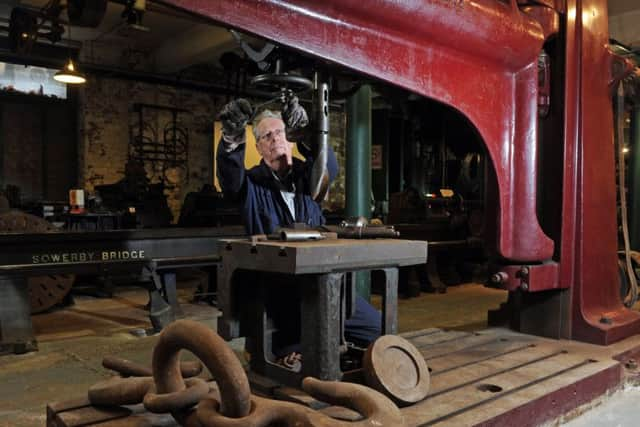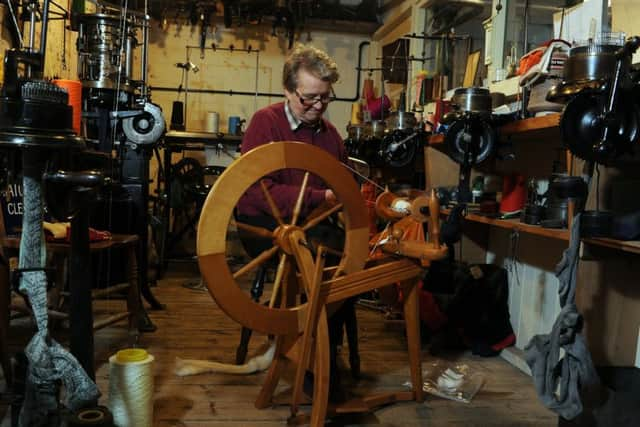How Calderdale Industrial Museum volunteers are preserving Halifax’s engineering heritage
It was through a combination of hard work, innovation and expertise that Calderdale prospered as a commercial centre in the West Riding. And it is these same traits that a committed group of volunteers are drawing on in their revival of a museum celebrating the area’s heritage.
Since re-launching in September 2017, Calderdale Industrial Museum has opened its doors to the public once a week, giving an insight into the industries that for many years provided employment for whole communities and generated wealth for the wider region.
Advertisement
Hide AdAdvertisement
Hide AdBehind the scenes, work on restoring more of its original exhibits goes on and as word of mouth spreads, its collection continues to grow.


The latest object, on temporary display, is a replica of the Karl Benz three-wheeler. Powered by a gas engine, and patented in 1886, it is regarded as the first ever motor car.
In the 1980s, Yorkshire firm Bentley Engineering produced replicas of the vehicle, some for motor giant Mercedes-Benz, as Graham Sellars, a volunteer with Calderdale Industrial Museum Association (CIMA) explains. “The [replica] machines were built initially in Batley and then later in Elland.”
In fact, nearly all of the museum’s artefacts and machinery, some fully-operational, come from local communities and some are the only surviving examples in the country.
Advertisement
Hide AdAdvertisement
Hide AdBut for more than a decade, they sat gathering dust, all but forgotten in a disused building.


According to a potted history by former museum manager George Drake, now a member of CIMA, the museum’s story begins with a man called John Magson, who joined the local authority’s museums service in 1950 and devoted more than 30 years of his life to building up collections of machinery, saving many a piece from the scrapheap.
“The decimation of traditional local industries and wholesale urban redevelopment in Halifax during the 1960s and 70s only accelerated John’s dream of a museum reflecting the growth of local industry, commerce and related culture,” George writes.
Originally, the objects and machines were displayed in the Piece Hall in Halifax, which was known as ‘the town of 100 trades’. One floor housed a pre-industrial museum, looking at the area’s domestic woollen and worsted cloth production, while another was home to heavier machinery.
Advertisement
Hide AdAdvertisement
Hide AdIn 1982, with more space needed for the latter, a decision was taken to create the Calderdale Industrial Museum in an adjoining building. It opened three years later, with 200 employees involved in its development, and, in 1987, won a national award. Despite its early success the museum, which had skilled engineers amongst its staff, closed to the public in 2000 after running costs became too great.


And it was only a decade or so later that fresh interest in the museum was sparked, when plans emerged for a new central library in a nearby building.
A public meeting was held and CIMA, which now has more than 350 members including around 50 weekly volunteers, was formed with the aim of restoring exhibits and reopening the site.
In 2016, Calderdale Council handed over the keys to the group which began operating the museum, supported by local authority cash and grants from lottery funding, Elland environmental organisation The Green Business Network and Lloyd’s Banking Group. “There’s been an awful lot of work to get things back up and running,” Graham says, recalling how the building was flooded in parts and disused machinery sat covered in dust.
Advertisement
Hide AdAdvertisement
Hide AdSome of the volunteer enthusiasts had worked in local trades, bringing with them technical skills, but, with many of the machines not having been used in more than a century, they had to turn to internet research, manufacturers’ instructions and archive material to help them get to grips with the collection. It is pride, passion and enthusiasm that has kept them going.


“I am a volunteer because I want my grandchildren to see what Calderdale did for the Victorian era and general manufacturing in Halifax, particularly textiles and engineering,” Graham says. “We are just proud of what Halifax gave to Yorkshire.”
“[The museum] tells people where Calderdale’s wealth came from,” explains Tim Kirker, the chairman of CIMA. “Halifax in the 1700s was bigger than Bradford and Leeds – it was the biggest textile centre certainly in the North.”
Other industries span out from it, particularly as machinery and equipment was engineered to help production. And it is the story of trade and invention over time that the museum shares with its visitors.
Advertisement
Hide AdAdvertisement
Hide AdIn the basement, the focus is on machine tools as well as mining, quarrying and pottery.
Among them is a radial drill created by Halifax company Asquith, which provided drilling machinery for the construction of the Sydney Harbour Bridge.
“They used to do a portable drill,” says CIMA volunteer Reg Alders. “It drilled every hole for every rivet in that bridge. And when they finished, it was too expensive to fetch them home, so they decided to leave all the machines there. So basically they dropped them into the foundations at that time so there’s still a bit of Yorkshire in there now.”
Water, steam, gas and electricity – the power behind the industries – are the focus on the museum’s ground floor, which features a 200-year-old waterwheel from Stone Mill Tannery in Sowerby Bridge, while upstairs covers everything from carpets – Halifax’s John Crossley and Sons was one of the largest manufacturers in the world – to cats’ eyes – the reflective road studs invented by Halifax man Percy Shaw – and a moquette loom that produced fabric for bus, plane and train seats, originally found at Holdsworth’s mills.
Advertisement
Hide AdAdvertisement
Hide AdA section is also dedicated to Halifax confectionary firm Mackintosh’s, giving visitors the chance to see a stained glass company window, clocking-in equipment and toffee wrapping and boiling machines. “The reaction [to the museum] is getting better and better,” says Graham, who has volunteered with CIMA for four years. “We have gone from nothing to getting number one on TripAdvisor [the museum comes at the top of the review website’s list of things to do in Halifax].
“I’ve shown people around from Japan, America, Mexico, Germany and Canada. We’re not on any local maps so TripAdvisor I think has done a bit of good publicity, but it’s word of mouth I guess.
“The good thing I see when you get a young family come in – and what I enjoy – is that they can be in here for an hour and the kids aren’t bored.”
“What marks us out from most places is the volunteers,” Tim adds. “The fact that there are people all over the place explaining things and demonstrating how things work.”
Advertisement
Hide AdAdvertisement
Hide AdIt’s clear that much has been achieved since CIMA was born eight years ago, but work is still very much in progress. Behind the scenes, volunteers give time on Tuesdays and Thursdays to maintaining the museum and its contents, developing new areas and restoring machinery.
Within six months they hope to open the top floor, taking visitors on a textiles journey from fleece to piece, incorporating cottage weavers, mammoth mills and what is thought to be one of only five remaining original spinning jenny weaving frames in the world. They also remain hopeful that they can get the museum’s steam engines back up and running, though repairs to the boiler are expected to cost £30,0000.
Extending the site’s opening hours from one day a week is another of their goals and they want to engage with more schools and children, with a particular focus on the STEM (Science, Technology, Engineering and Maths) curriculum.
Their long term aim, set out in their business plan, is both simple and ambitious so that, in Tim’s words, “this museum wins national awards once more.”
Calderdale Industrial Museum is open every Saturday from 10am until 4pm. Adult entry £5, concessions £4, children free.